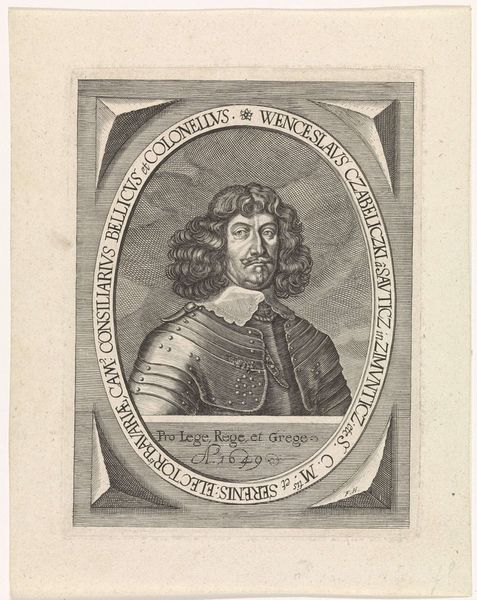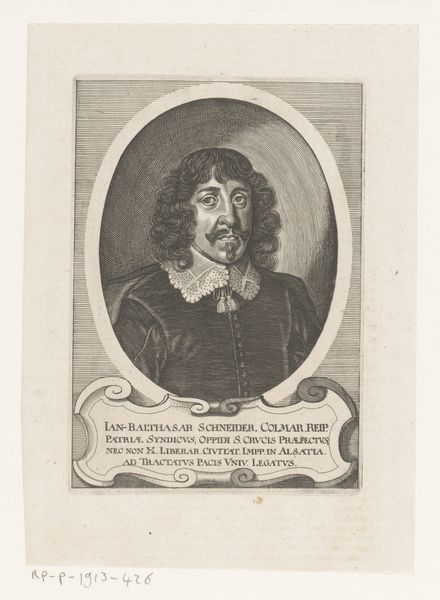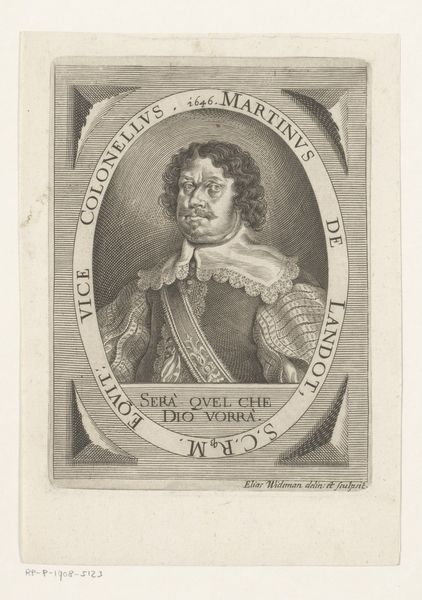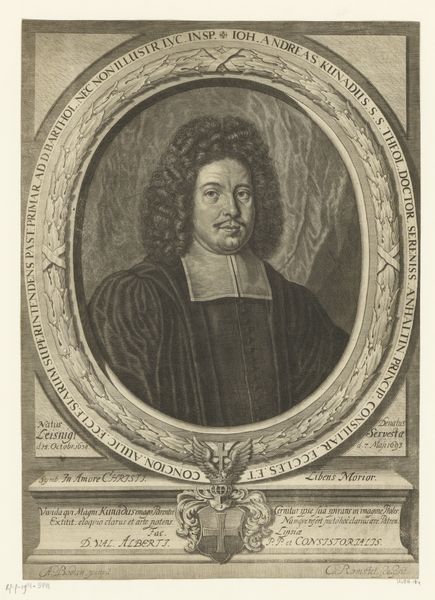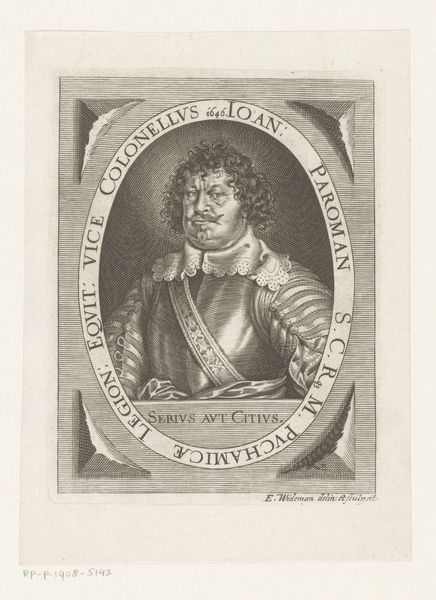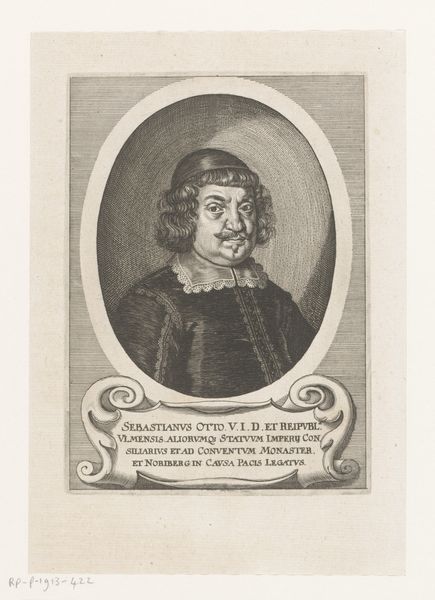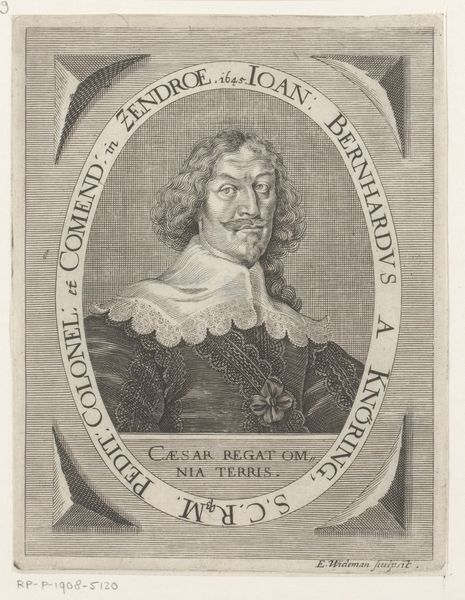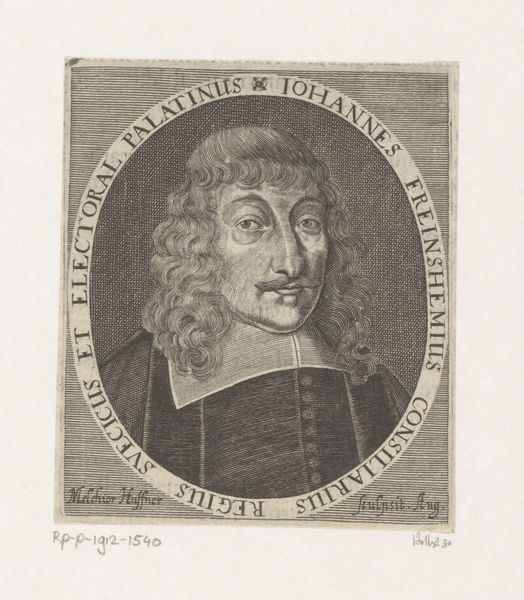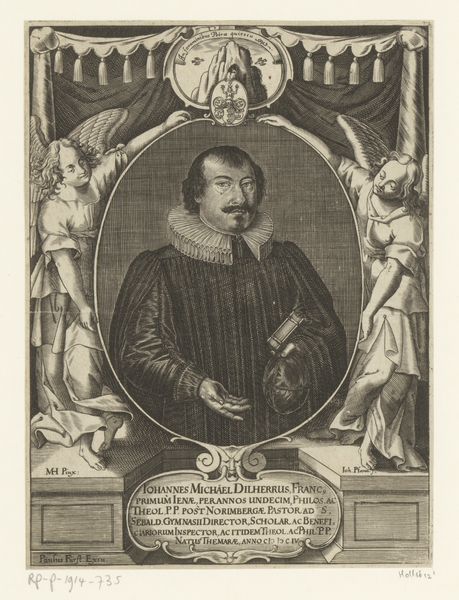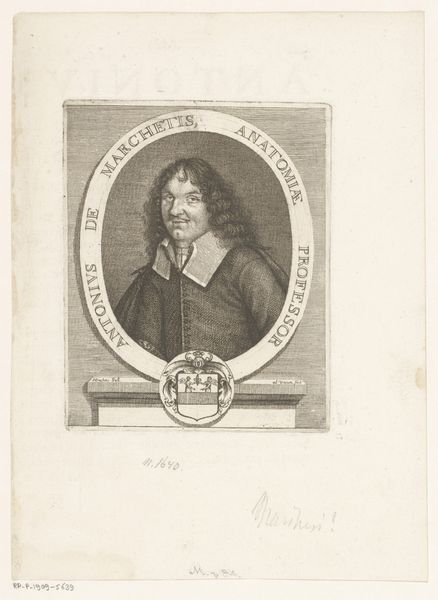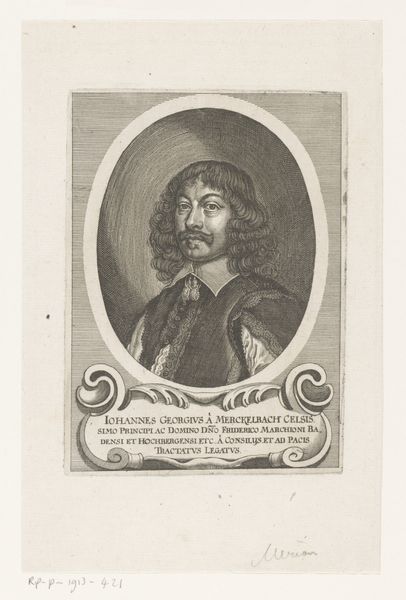
print, engraving
#
portrait
#
baroque
# print
#
old engraving style
#
form
#
line
#
history-painting
#
engraving
Dimensions: height 147 mm, width 114 mm
Copyright: Rijks Museum: Open Domain
Elias Widemann’s “Portret van Martin Pachonhay,” made in 1649, is an engraving, a printmaking process that requires immense skill and labor. The process involves using a tool called a burin to carve lines directly into a metal plate, usually copper. The plate is then inked, and the ink is carefully wiped away from the surface, remaining only in the incised lines. When paper is pressed against the plate, the image is transferred. Look closely, and you can appreciate the incredible detail achieved through this method, from the sitter's curly hair to the intricate lettering that frames the portrait. Engraving was not just a means of artistic expression, but also a reproductive technology. Prints like this circulated widely, disseminating images of important figures and events. The work involved in creating these plates was considerable, often involving skilled artisans working under the direction of artists. By appreciating the material and process behind this seemingly simple print, we gain insight into the broader social and economic context of its creation.
Comments
No comments
Be the first to comment and join the conversation on the ultimate creative platform.
